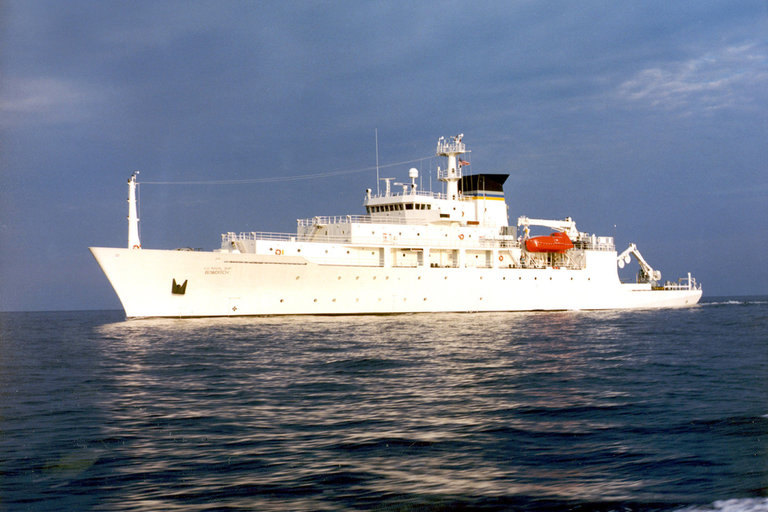News broke that a Chinese warship seized an underwater drone belonging to the U.S. Navy. Unarmed and six feet in length, the drone, which resembles an oversized children’s bath toy, was meant to help the U.S. Navy figure out how to use its actual submarines more efficiently, especially in shallower waters. Costing $150,000, next to nothing for the Pentagon, it’s not the sort of U.S. military equipment that usually triggers an international incident.
But that’s exactly what happened. China seized the drone, claiming that it was a “hazard to navigation” in the open ocean, and that they did so for safety reasons. The Pentagon insisted that it was operating in international waters, and pointed out that the mothership was in sight at the time the drone was snatched, and immediately demanded its return. Beijing offered to do so, and the underwater craft was returned to the U.S. this past Monday night.

The drone was launched by the Bowditch, an American ship, last week. Image source: U.S. Navy Visual News Service, via Associated Press.
So what exactly is an underwater drone? Basically, it’s a miniature submarine without any people inside. Because it’s much harder to send radio signals through water than air, these drones are typically not operated by remote control. In most cases, they’re completely autonomous, navigating with onboard computers and sensors.
The underwater drone seized by China was part of an unclassified program to collect oceanographic data, including salinity, temperature, and clarity of the water, according to a U.S. official. Data such as this can help inform U.S. military sonar data.
According to military.com, the U.S. Navy deployed underwater drones from submarines for the first time at the end of 2015. “Now you are talking about a submarine [commanding officer] who can essentially be in two places at the same time — with a UUV (unmanned underwater vehicle) out deployed which can do dull, dirty, and dangerous type missions,” Rear Adm. Joseph Tofalo told military.com. “This allows the submarine to be doing something else at the same time.”

An illustration of the U.S. Navy's underwater drone that was seized by China. Image source: Teledyne Marine vehicles.
The underwater drones used by the military are similar to commercial units used by oil companies for underwater exploration and by emergency services for search and rescue. The Navy, for example, used a Bluefin-21 to search for wreckage of Malaysia Airlines Flight 370, diving to 5,000 feet to scour the ocean floor.
“We're using commercial off-the-shelf technologies to do real-world missions for the combatant commander,” Tofalo told military.com. “The sensors are similar to the sensors that the oil and gas industry might use. They might be surveying where their oil pipes are, whereas we might want to be looking for a mine field.”
The technology behind the U.S. Navy’s underwater drones is still so new that there’s not a proper military acronym for it yet. Some refer to them as AUVs, for autonomous underwater vehicle, others call them UUVs, for unmanned undersea vehicle, and there are at least half a dozen other names thrown around. Acronyms aside, it’s easiest to think of the unmanned miniature submarines as underwater gliders.
It should also be noted that there are other types of submarine drones. Several navies and oceanographic research institutions have a variety of shorter-endurance, shorter-range, and faster submarine drones. Realistically, most modern torpedoes could be called UUVs because they can operate on their own after being launched at their targets. But those drones all require lots of power to turn their propellers. This allows them to move much faster, but the trade-off is that they can’t operate for as long.
Underwater gliders like the one China seized are designed to get around such an issue by using changes in water temperature to make the vehicle rise or sink, but to always move forward slowly. This means that they can operate across enormous distances and for long amounts of time without needing to be recharged.
In operation since the 1950s, there are over 250 different configurations of underwater drones in service, according to the Bard Center for Study of the Drone. Recently, the U.S. Navy has been expanding its investment in this area and named its first assistant secretary for Unmanned Systems in November 2015.
Advertisement
Learn more about Electronic Products Magazine





